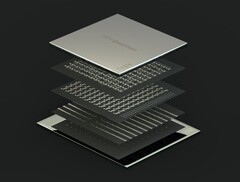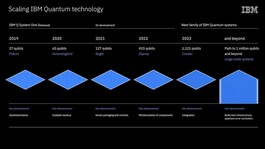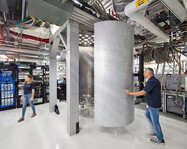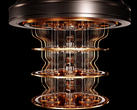Only a few months ago, China was taking the lead in the quantum computing race with the announcement of a 66-qubit processor, and now, IBM is already pushing things to the next level with a 127-qubit quantum CPU codenamed “Eagle.” As IBM’s Senior Vice President Dr. Dario Gil put it simply in his announcement at the annual Quantum Summit event, “the arrival of the ‘Eagle’ processor is a major step towards the day when quantum computers can outperform classical computers at meaningful levels.”
In just 2 years, IBM managed to increase the number of operational qubits from 27 (2019 Falcon processor) to 65 (2020 Hummingbird CPU), further doubling that count with this year’s Eagle processor that integrates 127 qubits. This latest quantum CPU iteration is so advanced that IBM claims you would need more bits than the number of atoms that exist in all people populating the Earth in order to describe the quantum state of all 127 qubits in a classical processor. Moreover, IBM is confident it can upp the qubit count to 433 by next year and eventually break the 1000-qubit barrier by 2023.
Gil further explained how IBM was able to effectively double the number of qubits: "We had to combine and improve upon techniques developed in previous generations of IBM Quantum processors in order to develop a processor architecture including advanced 3D packaging techniques that we're confident can form the backbone of processors up to and including our planned 1000+ qubit Condor processor. Eagle is based upon our heavy-hexagonal qubit layout as debuted with our Falcon processor, where qubits connect with either two or three neighbors as if sitting upon the edges and corners of tessellated hexagons. This particular connectivity decreased the potential for errors caused by interactions between neighboring qubits-providing significant boosts in yielding functional processors."
IBM's engineers also needed to reduce the number of elements that can interfere with quantum coherence, so the control wiring has been spread out throughout several layers, while the qubits remain isolated on their own layer. Thanks to such improved stability, the Eagle processor is able to handle concurrent real-time classical compute workloads that allow for the execution of broader codes.
With as many as 1121 qubits, IBM hopes it can achieve Quantum Advantage over classical computing solutions in real-world problems. Beyond that, scaling plans include a million-qubit processor and IBM is currently preparing a cryogenic solution consisting of a 10-foot tall by 6-foot wide refrigerator codenamed “Goldeneye” that will be able to provide near-absolute 0 temperatures for such a powerful processor.














